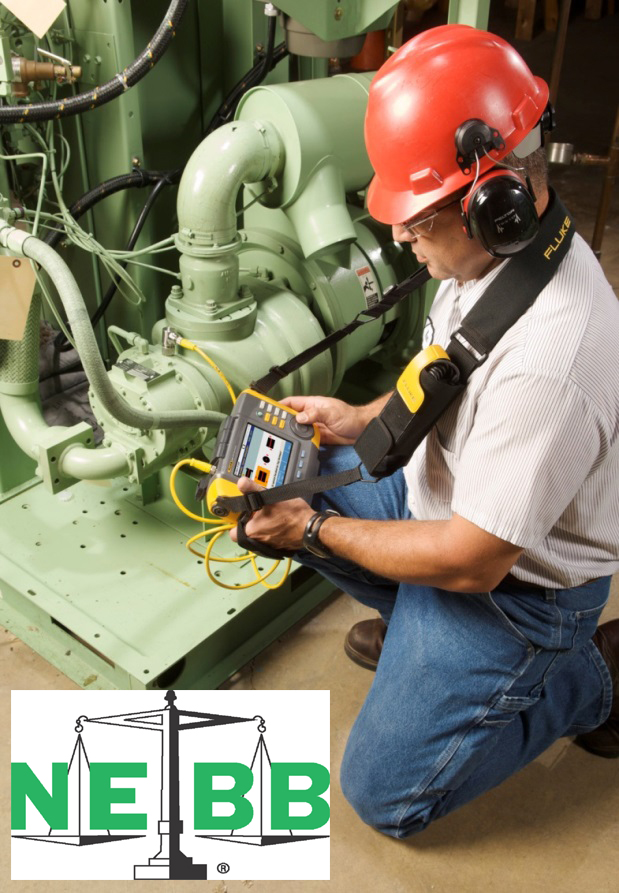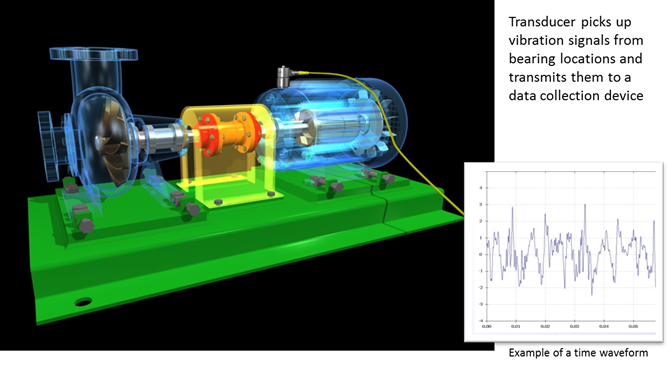For Predictive Maintenance on Mechanical Machinery
Vibration Testing & Analysis
Vibration Measurement Testing & Analysis for Predictive Maintenance
In the world of mechanical maintenance, vibration provides one of the earliest indicators of a machine’s health. With over half of unplanned downtime attributed to mechanical failures, more companies and facility managers are seeing value in vibration analysis.
Sander Mechanical is proud to be certified by the National Environmental Balancing Bureau (NEBB) to conduct vibration measurement testing. Sander is therefore uniquely qualified to evaluate machine vibration utilizing specialized measurement equipment and analysis software.
The Importance of Vibration
In simplest terms, vibration is the back and forth movement or oscillation of machines and components, such as motors, compressors, pumps, bearings, shafts, gears, belts and other elements that make up mechanical systems. Vibration can result from a number of conditions, acting alone or in combination; and may be caused by auxiliary equipment, not just the primary equipment.
Vibration can be both a sign and a source of trouble. Unchecked vibration can have potentially severe effects on machinery life, power consumption, and safety. Other times, vibration is just a normal part of machine operation, and should not cause undue concern. The difficulty is that most facilities personnel don’t possess the capabilities to discern the difference between acceptable, normal vibration and the kind that requires immediate attention to service or replace troubled equipment. This is where Sander can help.
Measured and analyzed correctly, we can use vibration in a predictive maintenance program as an indicator of machine condition, and help guide the facility or plant maintenance professional to take remedial action before catastrophic failure occurs. What’s even more compelling is that we’re able to do this without the extensive monitoring and recording required for conventional, long-term vibration monitoring programs.
Advantages of Vibration Testing & Analysis
Regular predictive maintenance through vibration analysis offers several advantages over “reactive maintenance” or even calendar-based preventative maintenance:
- Identify and repair deteriorating components before more expensive problems occur.
- Avoid catastrophic failures and extend the life of your machinery.
- Minimize disruption in your operation by avoiding unplanned downtime.
- Avoid unnecessary replacement of properly working components.
- Increase productivity by maintaining optimized operation.
- Enable better planning for replacement of capital equipment.
- Save money by reducing spare parts inventories.
Overview of Vibration Testing & Analysis Program
Sander employs the latest in vibration measurement technology to reliably diagnose the most common mechanical problems of unbalance, looseness, misalignment, and bearing failures in a wide variety of mechanical equipment. Our equipment is capable of detecting vibration amplitude, frequency, and direction along three planes of movement. We then run this information through industry-leading software to generate a diagnosis and a recommended solution. The diagnostic technology analyzes machine operation and identifies faults by comparing vibration data to an extensive set of rules developed over years of field experience.
We capture the unique vibration signals in series, and plot them in a time waveform with the signals’ amplitude (y-axis) depicted over time (x-axis). The waveform contains all of the information about the vibration of the machine at the point where it was measured; however, the individual patterns of vibration caused by different simultaneous events in the machine remain all overlapped and jumbled together.
A thorough frequency analysis performed with our software platform clarifies and simplifies the time waveform data. The result is called a vibration spectrum. A vibration spectrum plots the vibration signal’s amplitude (y-axis) against frequency (x-axis). Many vibration data collection systems can get you this far; but a trained technician is still required to interpret the data into something meaningful and actionable. Since every machinery fault produces a unique type of vibration signal, the signals displayed in the vibration spectrum often form characteristic patterns. Experienced pattern recognition is a key part of the analysis. Common issues typically identified include:
- Imbalance in rotating components
- Misalignment of couplings, bearings and gears
- Deterioration of rolling-element bearings
- Looseness and excessive clearances
- Resonance
- Rubbing
- Electrical problems
- Gear wear
A Vibration Testing & Analysis Program Can Pay for Itself
Contact Sander Mechanical today to improve your operational performance and extend the life of your machinery. Our NEBB-certified technicians will leverage advanced vibration analysis and machine diagnostics to achieve early detection of potential faults in your equipment. Our program will detect the root cause of a problem, provide a comprehensive report (identifying the severity of the issue), and focus remedial action only on those machine parts that are predicted to fail.



